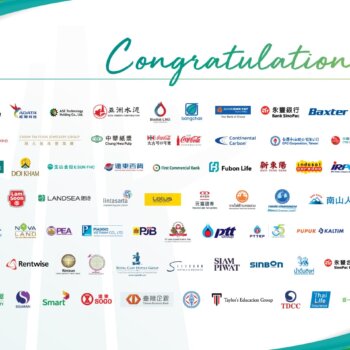Loftwork Inc., FabCafe, MTRL have created a support program and open community, COURIER, which assists innovators that target the global market. A meetup and presentation based on the topic, “Which city has the most global business opportunities?” was held on recently. At the event, nine business leaders knowledgable of the various regions in Japan shared their expertise and challenges.
Thinking of new businesses, putting them into practice, and sharing those ideas—that is “COURIER”
On this day, together with FabCafe, which have opened 10 offices throughout the world, Loftwork Inc. announced the opening of its new hub for global business in Hong Kong. Furthermore, along with the opening of MTRL Hong Kong, Loftwork Inc. also announced the launch of an online platform, “Material Service (MTRL.com),” which connects material manufacturers with creators.
The launch of COURIER is closely linked to this type of activity. In the opening speech, Mitsuhiro Suwa of Loftwork, Inc. reflected on the history of Loftwork, Inc.—”We have supported the new businesses and innovation of companies, but as a matter of fact, we have not had many connections with startups,” explanining that “whether it be an entrepreneur or an intrapreneur, the situation of capital and human resources is the same even though the crowd to appeal to may differ. If both sides share their information and network and complement one another, there is an opportunity to create a synergy effect.”
If we can utilize FabCafe as a platform for startups which aim to expand in the global market, we can persuade executives and investors to expand their businesses and thus create more possibilities. Suwa explained how from this idea, COURIER, a community of businesses was born—a community that thinks of new ideas, puts them into practice and shares them.
Startups without a sense of purpose and preparation will only become lost
The holy ground of startups—Silicon Valley. CEO of consulting firm Pacific Sky Partners Zak Murase, while describing how “unfortunately, the Japanese do not have a presence in Silicon Valley,” provided the following analysis of why Silicon Valley is known as the holy ground of startups.
<The Reasons Why Silicon Valley is the Holy Ground of Startups>
1) Great Weather
The good weather creates a welcoming atmosphere to share new ideas and start new businesses.
2) World’s Top Ecosystem
There has been a continuous cycle of achievers of success breeding new achievers since the 1960’s.
Meanwhile, the prices in general are 2.5 times those of Tokyo. This is characteristic of Silicon Valley—labor costs and cost of living are high, which can make placing a development team in Silicon Valley unrealistic. Given this situation, do startups have a chance in Silicon Valley? Murase shared the following recent topics.
– Total capital invested is generally increasing
投資件数は減少傾向だが、投資総額は増加傾向にあり、スタートアップ1件あたりの投資金額が増えている。
– General decrease in investments into seed stage startups
Investors have been actively investing in seed stage startups which are performing well, showing how they are carefully selecting where they are investing.
– The influence of the “Big 5” is overwhelming
Even if startups are able to innovate, they are either acquired by the “Big 5,” Facebook, Amazon, Microsoft, Google and Apple, or are completely crushed.
With that said, what do the Japanese need in order to perform well in Silicon Valley? Murase finishes by highlighting the 3 points below.
<Preparing to Enter Silicon Valley>
1. Hold a clear sense of purpose
2. Prepare to settle down in Silicon Valley
3. Slowly create a reputation and build trust
The key to promotion is to connect with local media and local people
Next, CEO of Network Communications Corp., Naoko Okada explained the business situation in Washington D.C., where her business holds an office. She emphasized how the city provides a suitable environment for startups—there are many security startups, rate of growth of entrepreneurs is number one in the U.S., the restaurant industry is booming, the city is undertaking a project to become a smart city (Smarter DC Project), the local embassy and chambers of commerce give strong support.
As for her specialty in global P.R., she explains, “Business and P.R. are closely linked. Creating something that fits with the local market and conducting promotion and P.R. activities go hand-in-hand.” She continued, discussing how local media is the key to “bringing the desired information to those who want it,” especially in the context of local promotion of products and services. She claims, “It is important to connect with locals, members of the community, people of the embassy, people in media and local executives. In order to do this, startups must disclose themselves and send out information.”
Case study: What is the methodology behind bringing Japanese goods and services overseas?
Tomohiko Nihonyanagi of Loftwork, Inc. raised the example of the “MORE THAN PROJECT,” a project which has supported the overseas expansion into 21 countries for the production of the “JAPAN brand.” He emphasized, “Bringing products and services overseas means bringing products and services to local markets. If a business does not understand this, they cannot sell. It is important to understand which regions and markets to target, understand their lifestyles and the market trends.” He shared some specific ways to approach this issue.
<Approaches to overseas expansion>
1) Adequate understanding of the company’s products and services
2) Selecting a business partner
3) Researching local markets
4) Localization
5) Promotion within local markets
Likewise, Takuya Hotta, CEO of Culture Generation Japan Co., Ltd., described the case of how Tokyo Some-Komon was successfully arranged into a Muslim dress as a way of promoting traditional Japanese dyeing methods overseas. He provided an analysis of the keys to success.
<Reasons for Success in Local Distribution>
– Selecting a business partner
The most important thing is to match with a business partner who shares the same sense of direction and passion. Partnering with designers and distributors with existing markets can make success more likely.
– Understanding which parts to keep and which parts to change
Clearly understand constraints, costs and strengths of the company’s product.
– Conveying a philosophy
Always use the underlying passion as a base to make decisions. Do not lose your sense of purpose.
Go global with understanding of local markets and making the most of the expertise in your best team
The second section kicked off with a session by Masaru Ikeda, co-founder of THE BRIDGE and blogger. Ikeda manages a news media site for startups and knowledgable in the business situations of various countries. He points out, “Japanese startups tend to look to Asia first to expand their business, but given the level of maturity in society and infrastructure, as well as the economic conditions in these countries, many of them do not succeed.”
With this point in mind, Ikeda introduced some startup hubs (cities) that have attracted attention.
– Paris
After renovation of a railway depot, Paris became home of the world’s largest startup campus, “STARTION F.” The French president, a former investment banker, has shown his active support for startups. Paris is also well known for its richness in talent in the field of A.I..
– Tallinn
Methods of raising funds is becoming diverse. “Funderbeam,” or the use of blockchain-based technology to bring together investors and companies is extremely interesting.
– Helsinki
Birthplace of Nokia. Many hubs for research and development with major startup activity. Oulu is famous for its event where startups pitch in the frozen water of the Baltic Sea.
– Tel Aviv
Israel’s largest festival for startups, DLD Tel Aviv, is held every September. Tel Aviv has become one of the prominent startup hubs of the world.
It’s not about the “city,” but the “people” who are there
Next, Kelsey Stuart, in charge of international communication of FabCafe at Loftwork, Inc., describes how FabCafe has built a global network. She explains, “When we open a new FabCafe overseas, we don’t evaluate the ‘city,’ but we evaluate the ‘people’ who are there,” and raised the following points.
<Criteria for opening a new FabCafe overseas>
– Is there a vision for FabCafe?
– Is there past experience in digital fabrication cafes?
– Is there connection to the local creator community?
– Would FabCafe function as a creative platform?
Stuart adds, “FabCafe is not a franchise. In each country, the promoters within each region gather their resources, capital and community and manage the cafe.” She explained how FabCafe has expanded globally by gathering people who sympathize with their philosophy and share their values, ideas, brand, graphics and websites.
Short presentations by two globally expanding startups
Next, two startups that have gathered attention made presentations. With his vision of “Product for Peace,” CEO Radcliffe Takashi Onishi of the Babels inc. introduced his Q&O (Question and Opinion) service, “historie,” which provides various interpretations of society’s controversial topics. He explains, “From problems of history and international conflicts, the information out there only provides one side of the story. For this reason, society is full of people who only see things from one perspective, which can lead to conflict. As a solution, society needs a product that can line up different opinions from multiple perspectives.” Instead of a Q&A service that provides one best answer, the service collects opinions that cannot be found through a search engine or SNS and information that are not found on Wikipedia or textbooks. By making various opinions easily visible, the service aims to promote the evolution of the imagination that mankind seems to be losing.
On the other side, , CEO of DiGINEL Inc./DiGITAL ARTISAN Inc., represented a startup which offers technology services related to digital tools. As one of the new services they are preparing to launch, he introduced “OpenNail,” a nail chip service which fits each individual’s nail shape. The company created a process utilizing a 3D printer to allow creators and designers to participate in the nail design process. In the future, easily ordering a nailchip of choice on the Internet and smartphones will become a reality.
Global business leaders provide hints for startups that succeed
– Presence of the Japanese
Murase: The Japanese are well-known for their disappointing levels of English. Whereas in the U.S., people are taught to express their opinions from childhood, the Japanese believe in conformity and have a hard time being heard because they do not express themselves. In Silicon Valley, this is becoming an obstacle.
Ikeda: The Japanese try to appeal to the fact that their startup is “Japanese.” But what’s most important is what is left once that national identity is taken away.
Okada: Are the entrepreneurs being trained to properly promote themselves?
Murase: If you decide to go to Silicon Valley, you should thoroughly practice your elevator pitch. Of course, there are people who are not proficient in English but do well in Silicon Valley. Those are the people who have passion or have something unique and are able to speak with confidence. Even if their English is not perfect, their aura is what leads them to success. This is a skill, too.
– Setting up an office
Okada: Apart from problems regarding communication, it might not matter where you put an office.
Ikeda: Since SaaS and the Internet is so commonplace nowadays, it might not matter. In fact, there are many cases where a business is organized around people who are scattered throughout different locations. Expanding business by selecting cities based on their features and gathering expertise in various locations could even be a way to make better startups.
Murase: It’s not rare for startups to scatter their teams in Silicon Valley. Startups will be strong if they can create a “best team” while taking advantage of each region’s features.
– The most important thing in global expansion is “English and mindset”
Murase: English. It’s the most important thing.
Ikeda: English of course, and also a mindset. If you have lived in Japan for a few decades, what you see becomes the world to you. We can expand our possibilities just by conducting business with the awareness that there are many races and cultures in the world.
There are obstacles for the Japanese to lead the world in innovation. However, now that there are platforms out there to bring innovation to the world, the path in front of us is opening. Okada sent a powerful cheer to all of the startups that are looking to expand globally: “Japanese people, let’s get more active globally!”
____________________________________________________
About the Author
This article was produced by Lotfwork. Through planning, production, and communication, Loftwork is a creative partner that will make business innovation a reality.see more.







































